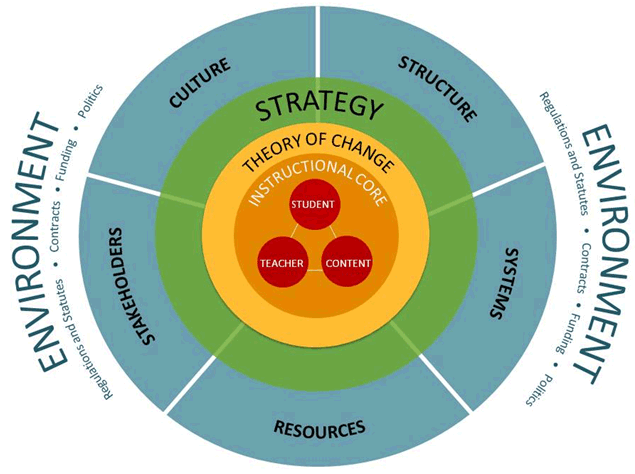PELP Coherence Framework
Key framework elements include:

Adapted from Tushman and O'Reilly's Congruence Model, 2002
Instructional core: The core includes three interdependent components: teachers' knowledge and skill, students' engagement in their own learning, and academically challenging content.
Strategy: A coherent set of actions a district deliberately undertakes to strengthen the instructional core with the objective of raising student performance district-wide. Gaining coherence among actions at the district, school, and classroom levels will make a district's chosen strategy more scalable and sustainable.
Structure: Structures help define how the work of the district gets done. It includes how people are organized, who has responsibility and accountability for results, and who makes or influences decisions. Structures can be both formal (deliberately established organizational forms) and informal (the way decisions get made or the way people work and interact outside of formal channels).
Systems: School districts manage themselves through a variety of systems, which are the processes and procedures through which work gets done. Systems are built around such important functions as career development and promotion, compensation, student assignment, resource allocation, organizational learning, and measurement and accountability. Most practically, systems help people feel like they do not have to "reinvent the wheel" when they need to get an important, and often multi-step, task done.
(Summary of “Note on the PELP Coherence Framework” by Stacey Childress, Richard Elmore, Allen Grossman, Modupe Akinola, & Caroline King)